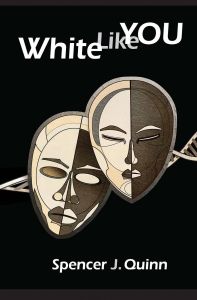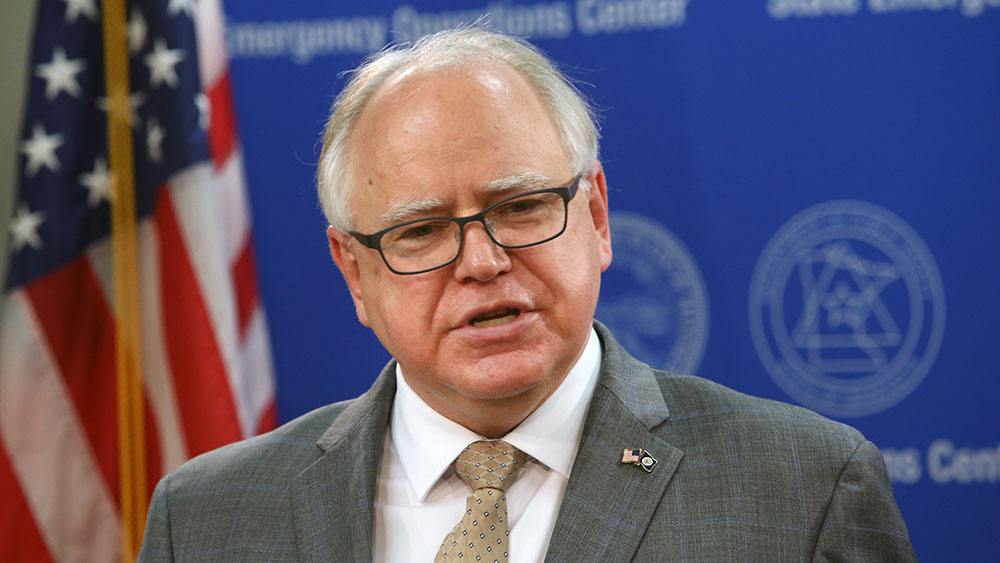The Fall of Minneapolis
It’s high praise indeed when a documentary calls the least possible attention to itself and still conveys the maximum emotional impact to its viewers. Of course, it helps when the subject matter is both riveting and timely. We have both and then some in Liz Collin and J. C. Chaix’s documentary The Fall of Minneapolis (also reviewed for Counter-Currents by Morris van de Camp).
Based on Collin’s book They’re Lying: The Media, the Left, and the Death of George Floyd, the documentary is about the George Floyd saga and its disgraceful aftermath throughout the summer of 2020, which resulted in four innocent police officers going to prison and much of Minneapolis and many other American cities going up in flames. It also represented the beginning of the end of the United States of America, since its institutions and leaders could no longer be relied upon to maintain law and order in the face of rampant black criminality. Decades of affirmative action had placed too many blacks into positions of power at all levels of government and culture for city leaders to resist the decline and violence that the very presence of blacks — as a generally low-IQ, poor-impulse-control population — necessitates.
The documentary shows much of this decline in graphic, bloody detail. It also chronicles the frightful mob mentality, which possessed much of America for those several horrid months and most likely still does. Just as importantly, it retells the George Floyd story from the perspective of the Minneapolis Police Department — the very people the city betrayed. The Summer of Floyd was such a pivotal moment in American history that at the time I suggested we adjust our calendars to it. Nothing will ever be the same again. With its in-your-face footage of the event and incisive interviews of the participants, The Fall of Minneapolis proves to be a gripping reminder of this.
The documentary begins with the lightest of touches: a chapter heading which reads “The Arrest of George Floyd,” followed by nearly 15 minutes of police bodycam footage of the incident from May 25, 2020 — footage suppressed by both the mainstream media and Judge Peter Cahill during the resulting trial of Officer Derek Chauvin. There is no narration, interviews, or graphics. No art to the presentation whatsoever. Only the occasional written commentary onscreen calling attention to particular details or translating murky dialogue. Reliving the incident from what for me was a new perspective was a chilling experience.
The police clearly did not murder anyone that afternoon. They were forced to deal with an increasingly erratic six-foot, six-inch black felon who had tried to pass phony bills and who was high on drugs and resisting arrest. George Floyd was desperate not to return to prison, and seemed to know that if he had complied with the police that evening, that is exactly what would have happened. There were several surprises for me in The Fall of Minneapolis, however, the first being a sense of pity for the handcuffed Floyd during his final moments. As his agitation intensified, his body — due to the all the fentanyl and meth he had ingested on top of his plethora of pre-existing medical conditions — began to shut down. He seemed vaguely aware of this as the police were attempting to secure him in the police car, but was too stupid and panicked to articulate it. All he could do was shake and squirm and blurt out “Mama!” and “I can’t choke!” and “I can’t breathe!” along with a series of primal grunts and screams.
The police initially had no way of knowing any of this. As soon as they realized that Floyd was undergoing a medical emergency, however, Officer Thomas Lane called for an ambulance. This happened 36 seconds after Floyd was placed on the pavement beside the patrol car. It took several minutes for medics to arrive, not because of the murderous intentions of white supremacist police officers but because there had been a miscommunication between the city’s Fire Department and Emergency Medical Services (EMS), which resulted in paramedics at first going to the wrong location. There is ample video evidence supporting this — exculpatory evidence which was later suppressed by the media and Judge Cahill.
The documentary reveals another interesting twist when Collin interviews Scott Creighton, the retired police officer who had arrested George Floyd in 2019. Bodycam footage reveals how strikingly similar both arrests were. Floyd had behaved erratically, lied to the police, resisted arrest, and consumed illicit narcotics at the last moment, presumably to prevent the officers from finding them in his possession. He actually admitted doing this after his 2019 arrest, and the filmmakers offer that hideous image of Floyd in 2020 with what looks like a pill, or pills, still in his mouth.
Collin and Chaix spend a great deal of time interviewing officers and former officers of the Minneapolis Police Department, and to a man they exonerate their brothers in blue. They tell of their humiliating flight from the precinct building. They tell of Mayor Jacob Frey’s cowardly decision to surrender the building to Marxist thugs. They tell of the physical and verbal abuse they were forced to take from the rioters. They tell of the dead pigs the rioters waved, as well as the bricks, stones, frozen water bottles, Molotov cocktails, and a host of other dangerous objects that were thrown at them. One officer even mentions mortars.
Minneapolis had turned into a war zone after the death of George Floyd, and the police weren’t even allowed to wear riot gear. Some fled in SWAT cars. Others had to flee the precinct on foot, running for their very lives, before a bus could pick them up several blocks away. The frustration, helplessness, and heartache of these people as they recount that horrific night is palpable. One officer describes the scene:
I remember looking through the rearview mirror as we left. It looked like a zombie movie. They all just rushed to the fence and started climbing the fence, and they caused the fences to collapse. And then they just all rushed the precinct. And as we are driving down the line, every window got broken out of the SWAT car.
Another highlight is how Collin and Chaix conduct Derek Chauvin’s first ever phone interview with the media. He’s articulate and calm, and explains why EMS arrived late and how his inability to present exonerating evidence in court made his trial a complete sham. Most importantly, he describes the Maximum Restraint Technique (or MRT) which he had used on George Floyd on that fateful day. He wasn’t choking Floyd by placing his knee on his neck; he was restraining him in the exact manner his training manual instructed him to. This technique had been approved by the Minneapolis Police Department as well as the city — two important facts that were also suppressed during this poor man’s trial.

Officer Derek Chauvin (left) using the Maximum Restraint Technique (MRT) on George Floyd as is shown in Minneapolis Police training materials (center and right).
Chauvin’s mother — who is a bit of a fireplug, by the way — offers her son’s training manuals as proof. She then vents her wrath, which is a tragic joy to watch. When the Minneapolis Police Chief had denied knowing about MRT while under oath, she called it “a frickin’ lie.” The other interviewees concurred.
The filmmakers then conduct a phone interview Alex Keung, the light-skinned black officer who is also serving time in prison for the death of George Floyd. Like his former colleagues, Keung insists that none of the officers did anything wrong. He also delivers one of the best lines in the documentary:
I think it is unfortunate that we have come to the point now that the justice system has been controlled by mob mentality. Social media, news outlets, and peer pressure now control the outcomes of trials and investigations.
No documentary about George Floyd would be complete without an impartial analysis of the autopsy. Days after the event, Hennepin County Medical Examiner Dr. Andrew Baker found no bruising on Floyd’s neck or back and “no physical evidence suggesting that Mr. Floyd died of asphyxiation.” He did find Floyd’s laundry list of pre-existing conditions, including coronary artery disease, hypertension, COVID, and an artery which was about 75% blocked. Floyd had 19 ng per milliliter of methamphetamine and 11 ng/mL of fentanyl in his system, which according to Baker would be “fatal under normal circumstances.” According to the initial report, Floyd died from a combination of his pre-existing medical conditions, a significant intake of narcotics, and his hysterical behavior while resisting arrest — none of which can be blamed on the police. Floyd had also lied to the officers about being high. Had he not done so, they would have called EMS sooner, as Creighton had done in 2019, and most likely saved his life.
Open and shut case, right?
Of course it wasn’t. With the resulting media spin, mob terror, and government overreaction, the documentary walks us through what happened next — but with its characteristic light touch, offers little explanation beyond generic accusations of cowardice, mendacity, and immorality. Why was George Floyd, a serial felon and drug abuser, practically sainted in death, while city and state leaders in Minnesota grotesquely warped the American justice system to prevent four police officers from getting a fair trial? Why was the courthouse during Chauvin’s trial surrounded by barbed wire, armored vehicles, and National Guard troops, while law enforcement was ordered to stand down as antifa and Black Lives Matter rampaged throughout Minneapolis?

You can buy Spencer Quinn’s novel White Like You here.
The filmmakers offer glimpses of the racial bogeyman behind the curtain when they show footage of a certain Reverend Jerry McAfee, who called out black gang members during Floyd’s funeral. They also reveal the fact that state Attorney General Keith Ellison, who was bent on altering Dr. Baker’s autopsy findings, had previously claimed that blacks do not need to follow the law. They also include footage of the loathsome Maxine Waters exhorting her followers outside the courthouse and calling for a guilty verdict while the trial was going on.
Yes, this is all about race. Whether intentionally or not, The Fall of Minneapolis puts black ethnocentrism on display in all its vulgar ugliness. Derek Chauvin, through no fault of his own, became what Tom Wolfe described as the “Great White Defendant” — that elusive, almost mythical creature which the justice system lusts after. To capture such a beast would not only assuage feelings of black inferiority and prop up the false narrative of “white supremacy” — which the Left needs to motivate its base — it also demoralizes the white majority and makes it less inclined to maintain high levels of civilization and to take a leading role in it. Why do so if it will land you in prison? Might as well let the cities burn. This is what the anti-whites crave, because in the end it will give them more power. Thanks to halfwit criminals such as George Floyd and others like him, this is what they are getting.
This analysis of the situation is my own, and appears nowhere in The Fall of Minneapolis. Yet after watching this devastating and unforgettable documentary, which for the most part lets the facts speak for themselves, I can’t think of any other conclusion to draw.







